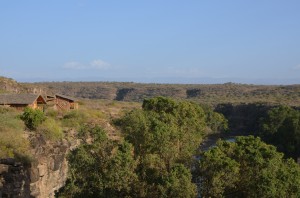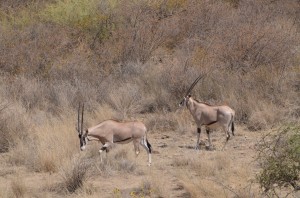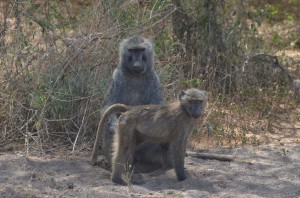Ethiopian Park is ‘Awash’ in Pollution and Population Pressures
Apr 8th, 2013 | By admin | Category: Biodiversity/ConservationBy Suzanne York, www.howmany.org
Ethiopia is the cradle of humankind. It is also home to an array of animal species. Yet both people and nature are under threat, mainly due to environmental degradation, poaching, and human population growth.
Today there are close to 90 million people in Ethiopia (it is the 2nd most populous nation in Africa). It is projected that Ethiopia’s population will double by the year 2050. This rapid growth has already had an impact on people – especially women – and also on the ecosystem.
A visit to Awash National Park, just a few hours drive east of Addis Ababa, sadly showcases many of the serious issues facing the country. The park was one of the first to be established. Though it still has much wildlife diversity, there has been a dramatic decline in wildlife, with some species, such as zebras, having died off due to human impacts.
Currently the biggest concern facing Awash National Park is one that a visitor can immediately see and smell. The Metahara Sugar Company, located in the nearby city of Metahara, is reportedly dumping chemicals and polluting the Awash River. If it continues, this will have serious consequences for local communities and the natural environment.
Dr. Yirmed Demeke, director of Wildlife for Sustainable Development and founder of the Awash Falls Lodge located in the park, said the sugar company is the main source of pollution and “is a headache for us.” He and others have written letters to various government ministers to resolve the problem, so far to no avail. He noted that the Awash River is used by millions of people and livestock.
Beyond the pollution issue, other impacts on the ecosystem include livestock grazing within the national park. One doesn’t have to look hard to see cattle, goats and even camels roaming the grounds, practically side-by-side with baboons and oryx.
Despite these pressing problems, there is reason to be hopeful for this particular park, and for local communities. It is a hot but very scenic area, with the falls gushing even in the dry season, and a beautiful gorge with easy access to views. Tourism – truly sustainable ecotourism that protects nature and benefits locals – has great potential. There are over 450 species of birds in the park. Dr. Demeke says he is “committed to conservation” and that Awash National Park is a priority for him and his organization.
One of the most promising approaches is that of PHE, or population-health-environment. This is an integrated approach to development that empowers communities by focusing on healthcare (especially family planning and reproductive health), education, livelihoods and local ecosystems. With this approach, resources can be better managed and protected, social needs met, and population growth stabilized.
According to Dr. Demeke, local people mainly from the Afar community, who live by the national park, are being trained as guides and involved in other types of livelihoods (thus far 12 locals have been trained as tour guides). Women are also being trained in alternative forms of income such as handicrafts – making jewelry, knives, and weavings, as well as baskets made from indigenous trees.
Educational outreach efforts have also been undertaken to help people understand the benefits of the park (this is being done in conjunction with the Ethiopian Wildlife Conservation Authority, a government entity). One such project is a zoological center to promote education on the region’s flora and fauna.
Wildlife for Sustainable Development is part of the PHE Ethiopia Consortium, which works on the population-health-environment approach. It has obtained funding for increasing collaboration among stakeholders and beneficiaries in Awash National Park, building the capacity of park management and the leadership of partners, and for promoting best practices. The hope is to meet the needs of the community via integration of the population-health-environment sectors and thereby ensure sustainability of the national park.
One of the mandates of the Consortium “is to play a role in protected areas for bringing a sustained conservation and management through integration and harmonizing the ecosystem with the interest of the surrounding communities.” The PHE Ethiopia Consortium was a main organizer of a 2011 workshop on rescuing Awash National Park. And prior to this workshop, a working group of Ethiopian organizations was set up in 2010 to develop “lasting solutions” for the park.
Perhaps an international campaign to clean up the pollution can be kickstarted (are you listening Avaaz?). Yet even without it, the Ethiopians are doing their utmost to improve this and other national parks. Moreover, the PHE Ethiopia Consortium believes that community ownership and participation must be core issues to be considered to bring about change in the park.
Negash Teklu, executive director of the Consortium, tirelessly spreads the message of the potential of the population-health-environment approach, stressing the need to combine natural resource management with family planning services. “Without it”, he has said, we “cannot solve the protected area problems.”
When people are healthy, empowered and invested in their communities, they will want to protect what they have. And while outside assistance can and should be given, it must be guided by the people most affected by the problems at hand.
Suzanne York is Senior Writer with the Institute for Population Studies and was in Ethiopia to attend a PHE conference in March 2013.



